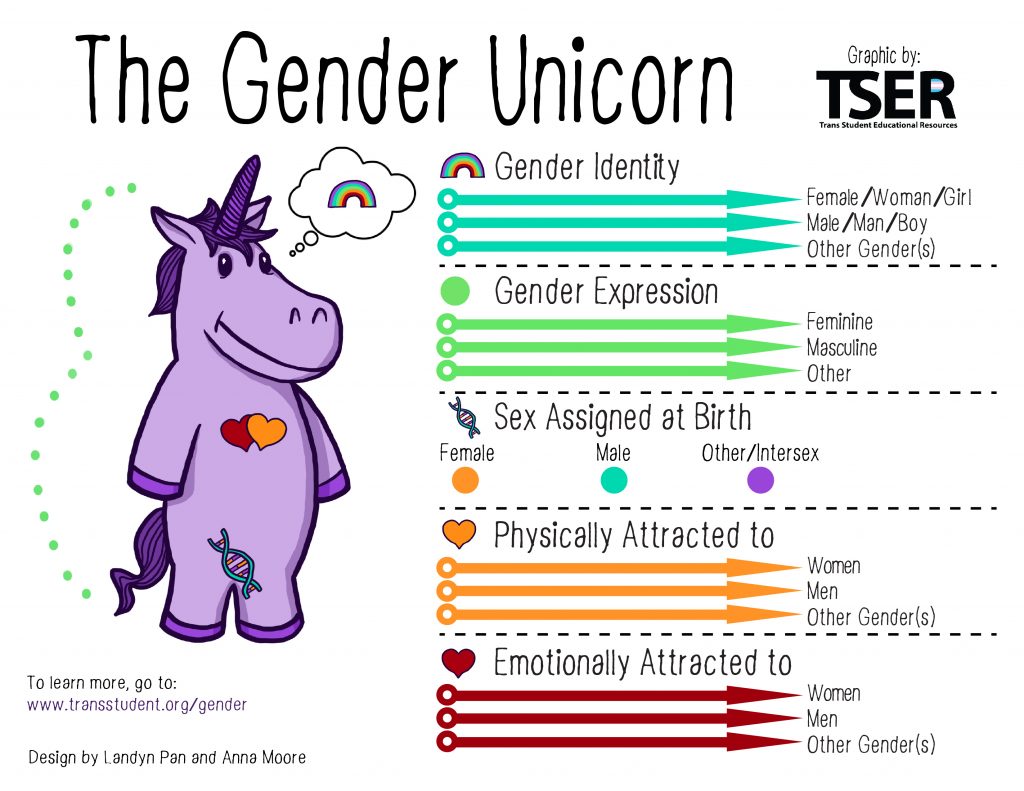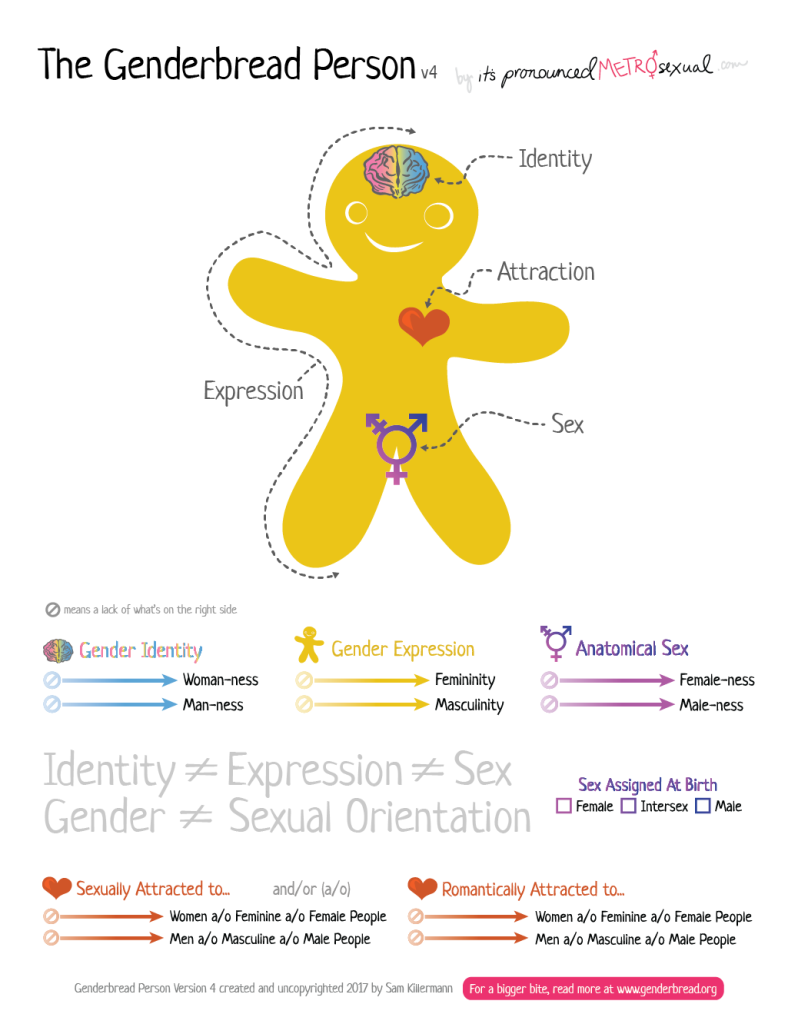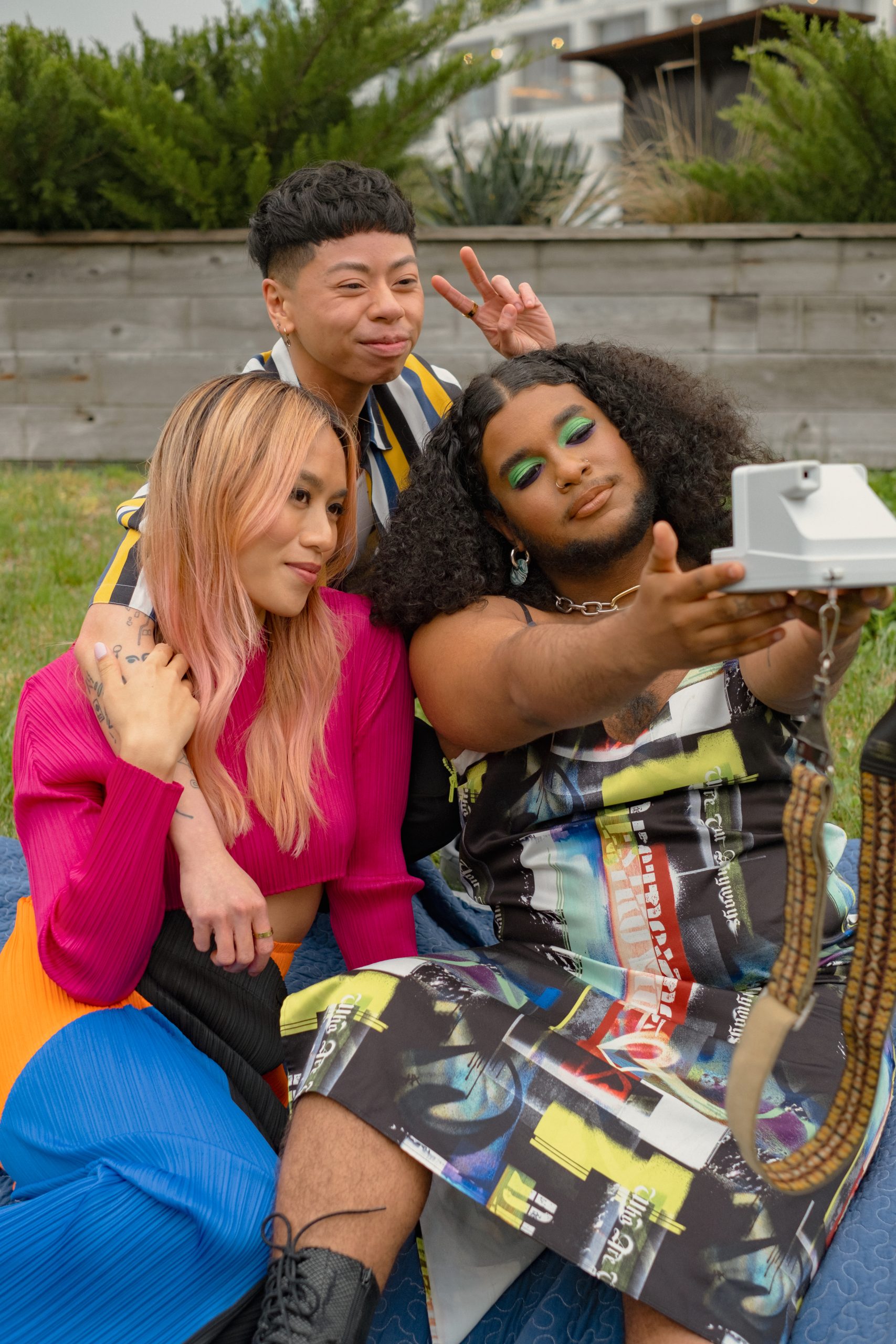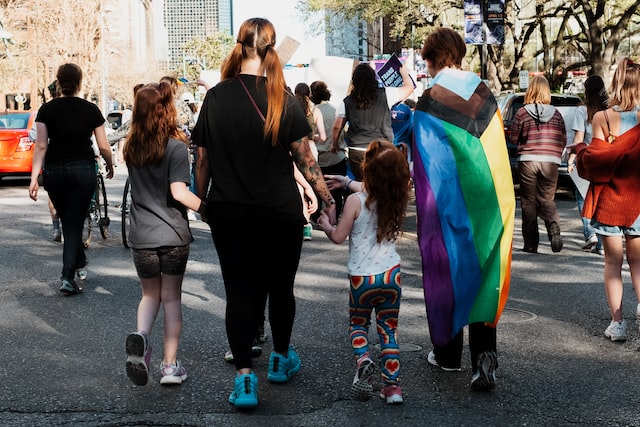The Gender Continuum
Viewing gender as a continuum allows us to perceive the rich diversity of genders, from trans- and cisgender to gender queer and agender. Most Western societies operate on the idea that gender is a binary, that there are essentially only two genders (men and women) based on two sexes (male and female), and that everyone must fit one or the other. This social dichotomy enforces conformance to the ideals of masculinity and femininity in all aspects of gender and sex—gender identity, gender expression, and biological sex.
According to supporters of queer theory, gender identity is not a rigid or static identity but can continue to evolve and change over time. Queer theory developed in response to the perceived limitations of the way in which identities are thought to become consolidated or stabilized (for instance, gay or straight), and theorists constructed queerness in an attempt to resist this. In this way, the theory attempts to maintain a critique rather than define a specific identity. While “queer” defies a simple definition, the term is often used to convey an identity that is not rigidly developed but is instead fluid and changing.
The Gender Unicorn
Trans Student Educational Resources was co-founded in 2011 by two 16-year-old transgender women, as Trans Student Equality Resources (TSER). It was and remains the only national organization run by young transgender people. TSER created the Gender Unicorn which describes the continuums of five major areas: Gender Identity, Gender Expression, Sex Assigned at Birth, Physically Attracted to, and Emotionally Attracted to.

The Genderbread Person
In 2012, Sam Killerman created the Genderbread Person as an infographic to break down gender identity, gender expression, biological sex, and sexual orientation. Killerman writes,
Gender identity is all about how you think about yourself. It’s about how you internally interpret the chemistry that composes you (e.g., hormone levels). As you know it, do you think you fit better into the societal role of “woman” or “man,” or does neither ring particularly true for you? That is, do you have aspects of your identity that align with elements from both? Or do you consider your gender to fall outside of the gender norms completely? The answer is your gender identity. It has been accepted that we form our gender identities around the age of three and that after that age, it is incredibly difficult to change them. Formation of identity is affected by hormones and environment just as much as it is by biological sex. Oftentimes, problems arise when someone is assigned a gender based on their sex at birth that doesn’t align with how they come to identify.
The Genderbread Person, a pictorial representation of these variations in identity, is, in 2022, in its fourth version as Killerman continues to update it to be more accurate and inclusive.

Transgender or Gender Non-Conforming Children
Children who do not feel that they are the gender they were assigned with birth deserve a bit of special attention in this discussion about gender. “Gender identity and expression are central to the way we see ourselves and engage in the world around us. This is certainly true of transgender and gender-expansive children and teens, for whom family support is absolutely critical” (Human Rights Campaign, 2019).
Transgender issues manifest at different times in life in different individuals. In most cases of gender dysphoria, the condition is often apparent in early childhood, when such a child may express behavior incongruent with and dissatisfaction related to their assigned gender. However, many of these children experience rejection as a result of their differences and quickly attempt to repress them. Therefore, people who see these children regularly may be unaware that they are unhappy as members of their assigned gender.
Family acceptance among transgender children predicts an increase in greater self-esteem, social support, and general health status. It also protects against depression, substance abuse, and suicidal ideation and behaviors. Parents’ access to information is critical in aiding and advocating for transgender youth.
A safe school climate is essential for transgender, gender dysphoric, and gender non-conforming children, who likely experience stress and anxiety due to their desire to transition or display themselves as a different gender. While many schools have become more accepting and allow children to express their desired gender identity, current research shows that there is an increased amount of harassment, bullying, indifference by school staff, and antigay victimization towards transgender and gender non-conforming youth.
Trans Parenting
There is little to no visibility or public support through pregnancy and parenting resources directed towards trans parents. In the case of trans individuals who desire to become parents and to be legally recognized as mothers or fathers of their children, courts often refuse to legally acknowledge such roles because of biological discrimination.

LGBT Parenting
LGBT parenting refers to lesbian, gay, bisexual, and transgender (LGBT) people raising one or more children as parents or resource parents. This includes: children raised by same-sex couples (same-sex parenting), children raised by single LGBT parents, and children raised by an opposite-sex couple where at least one partner is LGBT. LGBT people can become parents through various means including current or former relationships, coparenting, adoption, donor insemination, reciprocal IVF, and surrogacy.
Many lesbian, gay, bisexual, and transgender people are parents. In the 2000 U.S. Census, for example, 33 percent of female same-sex couple households and 22 percent of male same-sex couple households reported at least one child under the age of 18 living in the home. As of 2005, an estimated 270,313 children in the United States live in households headed by same-sex couples.
Scientific research consistently shows that gay and lesbian parents are as fit and capable as heterosexual parents, and their children are as psychologically healthy and well-adjusted as those reared by heterosexual parents despite the reality that considerable legal discrimination and inequity remain significant challenges for these families. Major associations of mental health professionals in the U.S., Canada, and Australia have not identified credible empirical research that suggests otherwise.
Children of LGBT parents do not have any differences in their gender role behaviors in comparison to those observed in heterosexual family structures. In fact, a study by Bos and Sandfort (2009) also revealed that children raised by same-sex couples felt less pressured to follow gender stereotypes. But children may struggle with negative attitudes about their parents from the harassment they may encounter by living in society.

Pause to Reflect!
Discuss the following questions.
- What challenges might LBGT families face when identifying an early childhood program?
- What role might early childhood educators and their program play in supporting LBGT families?
Media Attributions
- genderunicorn1-1024×791 © Design by Landyn Pan and Anna Moore / TSER-Trans Student Educational Resources is licensed under a CC BY (Attribution) license
- Genderbread-Person-v4 © Sam Killerman is licensed under a Public Domain license
- Three friends of varying genders taking a selfie in a park with a polaroid camera © The Gender Spectrum Collaborative is licensed under a Public Domain license
- Family at a parade © Photo by Aiden Craver on Unsplash is licensed under a Public Domain license

